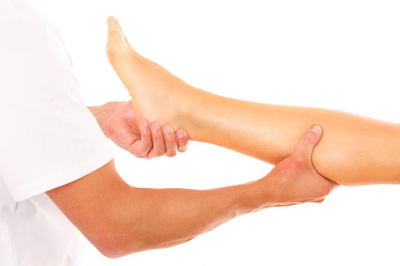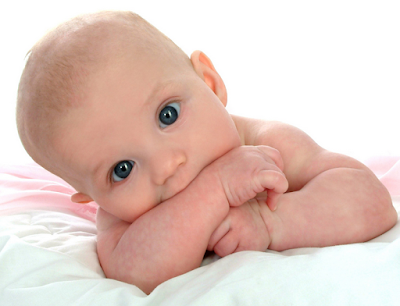Mixed cerebral palsy is a developmental disorder caused by brain damage
before, during or after birth. Children with mixed CP have damage to the motor
control centers in several parts of their brain.
Children with this condition may have issues with movement, including:
spasticity (abrupt, convulsive movements), involuntary movements, imbalance and
lack of coordination. In order to understand mixed cerebral palsy, a quick
overview of the primary issues with the other types of cerebral palsy can be
helpful because each may be present in mixed CP.
Spastic – High muscle tone, causing stiffness and jerky movement
Athetoid – Variations in high and low tone, causing rigidity and
floppiness
Ataxic – Issues with balance and coordination affect normal movement
Children who exhibit movement problems that fall into two or more of these
categories are classified as having mixed cerebral palsy. The most common
variation of mixed CP is a combination of spastic and athetoid.
Mixed CP varies based on the location of movement problems. These movement
problems can occur in the legs (diplegia), one half of the body (hemiplegia) or
all four limbs (quadriplegia).
Causes and Risk Factors
All cases of cerebral palsy are the result of damage to the developing brain.
Injuries to the various motor control centers give rise to different types of
cerebral palsy. In mixed CP, multiple parts of the motor control centers may be
damaged, causing movement problems seen in various types of cerebral palsy.
Motor cortex
The motor cortex is one of the most important components of the brain’s motor
control centers. Movement starts as signals from the motor cortex relayed to
other parts of the brain that regulate motor control. These signals are then
passed to the nerves in the muscles. Damage to the motor cortex causes
spasticity in the muscles, joints and tendons.
Pyramidal tracts
The pyramidal tracts are the pathways whereby signals from the motor cortex
travel to nerves in the spine. Damage to the pyramidal tracts has a similar
effect to a damaged motor cortex. Signals from the motor cortex can’t get
through without the pyramidal tracts. Therefore, this type of brain injury also
causes movement problems characterized by spastic cerebral palsy.
Basal ganglia
The basal ganglia are a group of several types of neurons in the center of
the brain. The basal ganglia process signals from the motor cortex before
sending them along to the brainstem. Athetoid cerebral palsy is caused by damage
to the basal ganglia, which help control voluntary movements and cognition.
Children with athetoid CP have issues with high and low muscle tone. These
variations in muscle tone cause involuntary movement and lack of muscle
control.
Cerebellum
The cerebellum’s role in motor function is to maintain balance and
coordination of movement. Children with damage to the cerebellum have issues
with posture, walking and fine motor skills. Some children with athetoid CP also
have damage to the cerebellum. Children may develop ataxic CP if the cerebellum
is only damaged by part of the brain.
There are numerous ways any of these parts of the brain can be damaged, most
notably:
Infections before or after birth
Lack of oxygen at or during birth
Traumatic head injury in first years of life
There are several risk factors that may increase the chances of a child
developing cerebral palsy, including: severe untreated jaundice, placental
failure and bleeding in the brain. Learn more about the other risk factors of
cerebral palsy.
Signs and Symptoms of Mixed Cerebral Palsy
Every case of cerebral palsy is unique because of the different levels of
severity and specific locations of movement problems. Children with mixed
cerebral palsy, however, tend to have an even wider variety in symptoms since
each child may have different types of brain damage. The symptoms of any type of
cerebral palsy may apply to a child with mixed cerebral palsy. Some of the most
common are:
Exaggerated, jerky movements
Abnormal reflexes
Poor posture
Tremors or shakiness
Issues with coordination
Diagnosing mixed cerebral palsy can take up to 18 months because some
children develop slower than others. It’s also hard to tell if a child with a
brain injury will make a recovery and develop normally.
The typical signs of mixed CP in a child include:
Inability to hold up their head
Unnaturally stiff muscles
Crossed legs or abnormal gait
Inability to roll over
Favoring one arm when reaching for objects
Treatment for Mixed Cerebral Palsy
The level of treatment required for mixed cerebral palsy is different with
every child. Some children may only require minor physical therapy, while others
may need more radical treatments. Either way, the goal of treating cerebral
palsy is to provide the child with the highest level of independence possible.
This is accomplished through physical therapy, medication and sometimes
surgery.
Physical therapy
This is generally the first step of treatment. The type of therapies geared
toward a child with mixed cerebral palsy depends on the specific movement
problems they are expressing. Physical therapy uses several methods of
treatment, including: strength training, flexibility exercises, massage therapy
and splints and casts to help with posture and walking.
Medications
There are many kinds of medications prescribed to children with mixed
cerebral palsy. Not only are some medications designed to help control motor
function, but some help manage co-occurring conditions, such as seizures and
behavioral disorders.
Surgery
Surgery for children with cerebral palsy is generally geared to relieving
painful contractures and making movement more manageable. Children with
spasticity are the most likely to be recommended surgical treatment, although
surgery may be helpful in some cases of mixed CP (with more characteristics of
athetoid). There is a specific age children can benefit from surgery, and
choosing surgery depends on the parents goals for their child’s quality of
life.



















